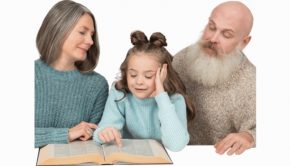“Friends past and present play powerful and often unappreciated roles in determining our sense of self and the direction of our lives,” says Flora. “Even in a supposedly meritocratic society, friends give jobs and assignments to each other, so having friends that share your career interests and aspirations can get you much farther than you could ever get on your own.”
Make New Friends, Keep the Old
Today, making and keeping friends can be challenging, due to distance, frequent life changes, overprotective parenting and substituting social media for more intimate face time. It all makes friendship more fluid than we might realize, says Shasta Nelson, the San Francisco founder of GirlFriendCircles.com, a women’s friendship matching site and author of Friendships Don’t Just Happen: The Guide to Creating a Meaningful Circle of Girlfriends, plus the upcoming book, Frientimacy, about deepening such relationships.
Hallmarks of good friendship include staying in touch and being consistently positive and vulnerable, so as we reveal ourselves over time, we can be authentic with each other.
“Most of us replace half of our close friends every seven years,” says Nelson. Although this might seem alarming, she considers it a natural ebb and flow. “We all need a couple of very close friends, while others that come and go might just be what we currently need—at work or school, among firsttime parents, in a new neighborhood, starting a job, in retirement or during some other life change,” she says.
Canadian Greg Tjosvold, a married middle school teacher in Vancouver, Canada, has enjoyed great friendships with women, including his wife, partly because he doesn’t relate to men’s generally competitive nature and interest in sports. But when a close female friend moved away, he wanted to expand his circle to include men. He joined a group called The Barley Brethren that sample craft beers and talk about life. Although not into suds, he values “having a safe and enjoyable place to discuss deep issues, victories and temporary setbacks.” He admits, “That’s over-simplification, though.” Finding a group of men he can feel a part of has validated him, making this unique man still feel like one of the guys.
Nelson categorizes the concentric circles of developing friendship as starting with a mutually agreeable acquaintance or contact, and then moving emotionally closer with someone that we find similarities with. Then the original bond can enter the confirmed friend category. A group of friends, like a longtime book club, can constitute a community. The highest level is the committed friend that has evolved into a trusted and valuable life companion.
Sarah Huntsman Reed, a medical counselor in Kansas City, Missouri, has such a lifelong friend. She met  Doug Reed, now a pharmacist, when both were in their high school musical, Once Upon a Mattress. Reed had a great sense of humor, Sarah remembers. “He’s still the most honest yet kindest person I’ve met,” she says. Soon, their mothers became friends, too, and the two teens would pair up for family weddings. Then she went to college and married and he moved away; yet they stayed in touch through mutual friends and their moms, catching up in person when he returned to his hometown.
Doug Reed, now a pharmacist, when both were in their high school musical, Once Upon a Mattress. Reed had a great sense of humor, Sarah remembers. “He’s still the most honest yet kindest person I’ve met,” she says. Soon, their mothers became friends, too, and the two teens would pair up for family weddings. Then she went to college and married and he moved away; yet they stayed in touch through mutual friends and their moms, catching up in person when he returned to his hometown.
Seventeen years after they first met, by which time Sarah was divorced, the two discussed taking their friendship to the next level and soon married. “It was a big decision to commit, because we knew so much about each other,” she says. “But we prefer each other’s company, and it was the best thing we ever did.”
Safety Net
In trying times, friends can surround us with positive energy, says Madisyn Taylor, co-founder and editor-in-chief of the spiritual blog DailyOm, in Ashland, Oregon. “The people we love form a protective barrier that buffers and shields us from many of the world’s more crippling blows,” including receiving hurtful slights from others.
Everyone from contemporary scientists to ancient philosophers agrees that having strong social bonds is probably the most meaningful contributor to happiness.
~Gretchen Rubin, author of The Happiness Project
How we make friends has been altered by today’s social landscape, which includes working parents and Amber Alerts. The days of children freely roaming their neighborhood discovering friends to play with are, unfortunately, over, says Jennifer S. White, a Toledo, Ohio, blogger and author of The Art of Parenting: Love Letters from a Mother.
“My long-term friendships from childhood were all built around being neighbors and playing together just because we wanted to,” recalls White. With today’s safety concerns and work-life challenges, parents now set up playdates, a more structured, less organic way of fostering childhood friendships, and they must be proactive to ensure success.
White has some misgivings about this modern-day approach. “When I think about that one little gleaming seed of truth at the heart of why, it’s often because I don’t think it’s fair that I have to be a popular ‘playdate mom’ for my kid to have some friends.”
Besties and Buddies
Automatic playdates—with siblings—often enhance family ties through lifelong friendships. Sally Ekus is a culinary talent representative in Florence, Massachusetts. Her younger sister, Amelia, is the general manager of Twitter Cafe, in New York City, and lives in Brooklyn. Both foodies have knife-and-fork tattoos. Sally is more into meal ingredients and preparation, while Amelia loves pouring wine and making sure everyone is comfortable.
 “Together,” says Sally, “we create total hospitality, from lavish Passover seders to Friday nights with friends.” She notes that her sister is the only other person who understands what the world looks like through the Ekus girls’ perspective.
“Together,” says Sally, “we create total hospitality, from lavish Passover seders to Friday nights with friends.” She notes that her sister is the only other person who understands what the world looks like through the Ekus girls’ perspective.
Some adults might never meet faceto-face, but become friends via social media. American Jamie Schler, co-owner of the Hotel Diderot, in Chinon, France, with her native-born husband, says, “Social media [especially Facebook posts] is how I meet and make personal friends and keep in touch on a daily basis. As an expat, this is important because I often feel far from family and friends that understand me, share common interests and ideas and speak the same language—and I don’t necessarily mean English.” Her high-tech circle ranges from hometown pals to new friends in the food community and political forums. She raves, “It’s a place where I find them all at the same time!”
Nelson remarks, “No one is saying Facebook should replace visits, nights out and phone calls, but in a world where most of us wish we felt closer to a few more people, it doesn’t hurt to use every tool at our disposal for creating connections.”
He alone has the spirit of making me smile and touching me to the bottom of my soul.
~Joseph Haydn on Wolfgang Amadeus Mozart, fast friends and musical mentors
Differences in age needn’t be a hurdle in forging friendships. Candelaria Silva-Collins, an arts marketing professional in Boston, attended area social gatherings where she regularly encountered a museum director and his wife. “They seemed like a fantastic couple,” she says, and began a friendship with the older woman, despite their being from different generations. “My friend teaches me a lot about being vital and vibrant,” she says.
Expanding Circles
Becoming friends with people of different ages, languages and social standing gives us a spiritual workout, advises Nelson. With a master’s degree in divinity, Nelson views friendship as a type of health club in which we develop our empathy, forgiveness and compassion muscles through practice. “Friendships are the way we become better people,” she says.
Furthermore, the process, especially with people unlike us, leads to a better world. “Being able to inherently care for people we know makes it easier to do the same for people we’ve not met yet,” says Nelson. World peace happens one friend at a time.
Freelance writer Judith Fertig also blogs at AlfrescoFoodAndLifestyle.blogspot.com from Overland Park, KS.
How to Make Good Friends
BY SHASTA NELSON
Three Necessary Ingredients
Both friendship and romantic bonds are developed when three things occur: We feel satisfied, which  happens when an interaction has more positivity than negativity. We feel safe, which comes when we commit to consistent time with each other. We feel seen, which we experience when we practice revealing ourselves and expressing vulnerability.
happens when an interaction has more positivity than negativity. We feel safe, which comes when we commit to consistent time with each other. We feel seen, which we experience when we practice revealing ourselves and expressing vulnerability.
Here’s a formula for creating meaningful connections: Positivity + Consistency + Vulnerability = Frientimacy.
Two Steps
It usually takes most people six to eight interactions with someone new before they start feeling like friends. The sooner they schedule such occasions, the sooner the rewards.
• Be open to making new friends.
• Make the first move; repeat.
One Ratio
To keep a friendship going, remember that it has to have a positivity-to-negativity ratio of at least five-to-one. That means sharing five times more fun and feel-good moments than stressors that can range from disappointments and frustrations to jealousies. By definition, to be and keep a good friend requires that both parties bring satisfying positivity to the relationship.
Source: Adapted from Frientimacy: How to Deepen Friendships for Lifelong Intimacy by Shasta Nelson; scheduled for release in March.































